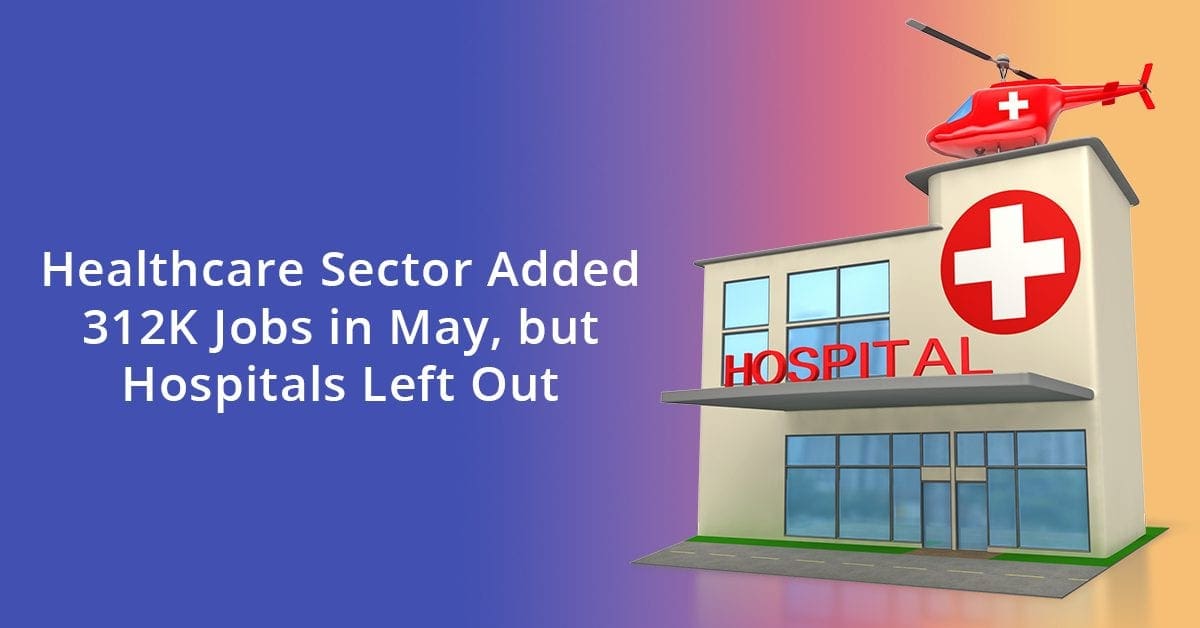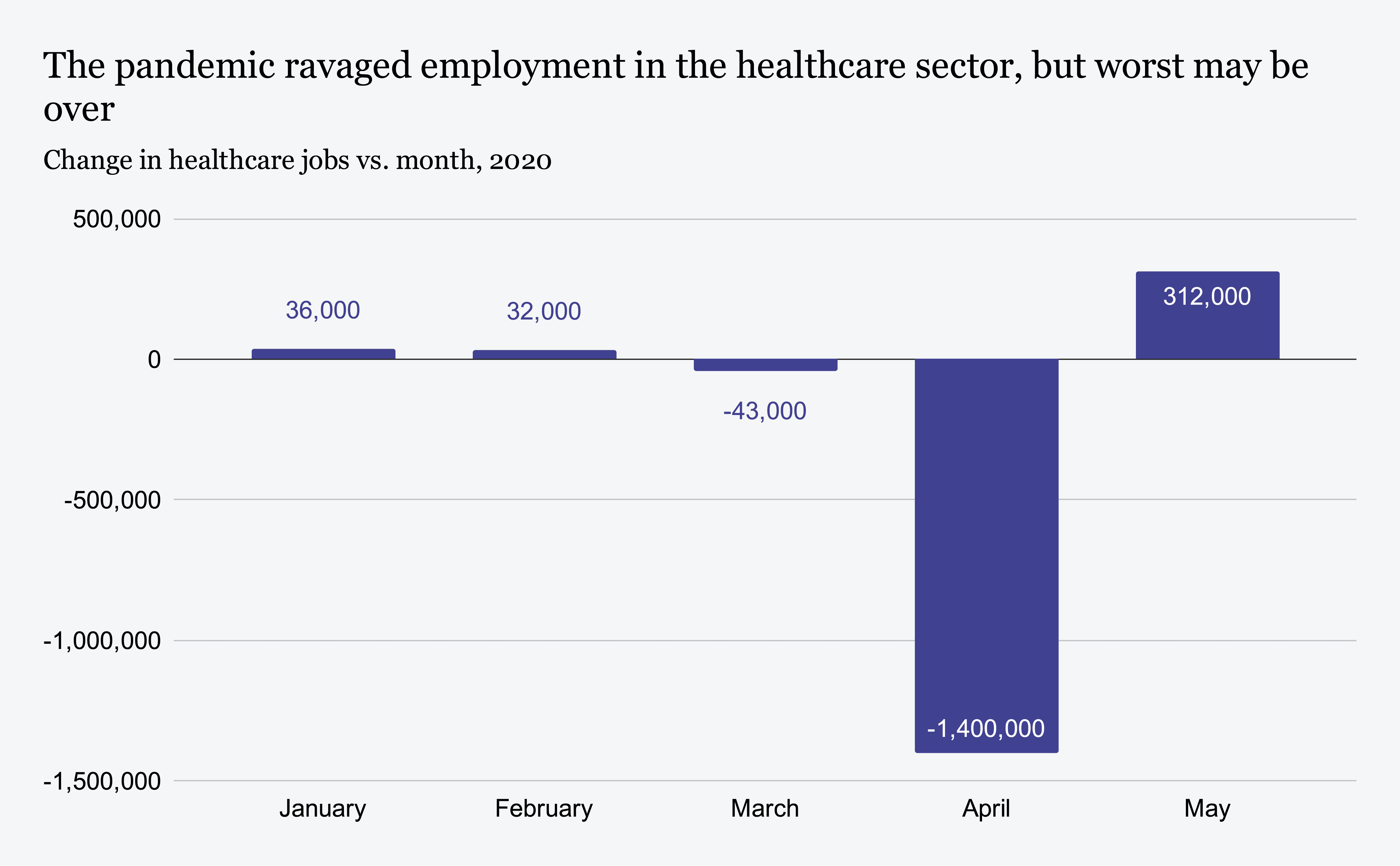Call us toll-free: 800-878-7828 — Monday - Friday — 8AM - 5PM EST

By Hailey Mensik for Healthcare Dive
UPDATE: June 8, 2020: The Bureau of Labor Statistics included a footnote in the jobs report noting that the overall unemployment rate is likely about three percentage points higher than reported because of a classification error it is working to correct. The error has to do with how people who are temporarily not working because of the COVID-19 pandemic are recorded.
This brief has also been updated with additional insight.
Dive Brief:
- Healthcare employment increased by 312,000 in May, led by gains in offices of dentists, with a 245,000 jump. Offices of other health practitioners added 73,000 jobs and physician offices added 51,000, according to the U.S. Bureau of Labor Statistics jobs report published Friday.
- But hospitals were left out of the gains, losing 27,000 jobs last month. Nursing and residential care facilities also saw a continued downswing with 37,000 jobs lost.
- The unemployment rate overall dropped from a record 14.7% in April to 13.3% in May, improvements reflecting limited resumption of economic activity curtailed in March and April due to the COVID-19 pandemic and efforts to contain it, BLS said.
Dive Insight:
May’s jobs report shows surprising gains in the healthcare sector following widespread workforce reduction measures in wake of the pandemic and depleted volumes.
The sector lost 43,000 jobs in March, then another 1.4 million in April, with most concentrated in ambulatory care, dentists offices and doctors offices. But Friday’s figures seem to show an unexpected reversal.
The collective uptick of roughly 124,000 jobs in health professional and physician offices suggests patients who have been delaying non-urgent medical care are back and seeking treatment outside of hospitals.
Other May gains were in outpatient care centers at 10,800 jobs added, up 1.2%, and medical and diagnostic laboratories with 400 new jobs, a 0.16% increase.
The increase for outpatient centers is to be expected as states begin to lift stay-at-home restrictions and health systems restarted elective procedures.
But the industry still faced losses. Nursing and residential care facilities lost 37,000 jobs in May, and community care facilities for the elderly lost 8,300 jobs.
Hospitals lost 27,000 jobs in May after losing nearly 135,000 in April.

The pandemic upended most health systems operations and finances, leading many to take workforce reduction measures including furloughs, layoffs or pay cuts over the past two months.
In April, 16.2 million Americans were on temporary layoffs, according to BLS data. That figure decreased by 2.7 million in May, leaving 15.3 million still on temporary layoffs.
Some economists tempered the enthusiasm of the rallying stock market, noting the gains included previously furloughed workers. The number of permanent job losses continued to rise, increasing by 295,000 in May to 2.3 million.
President Donald Trump heralded the report as evidence the U.S. is on the path to recovery and Republican backers said it bolsters their view another economic package from Congress is not needed.
Overall, U.S. employers added 2.5 million jobs in May. But the unemployment rate is still exceptionally high, stoking fears of widespread loss of employer-sponsored health coverage amid the ongoing pandemic.
And while some patients are returning for check ups and dental care, Industry experts predict it will take well into next year for hospitals to return to their pre-pandemic volumes.
